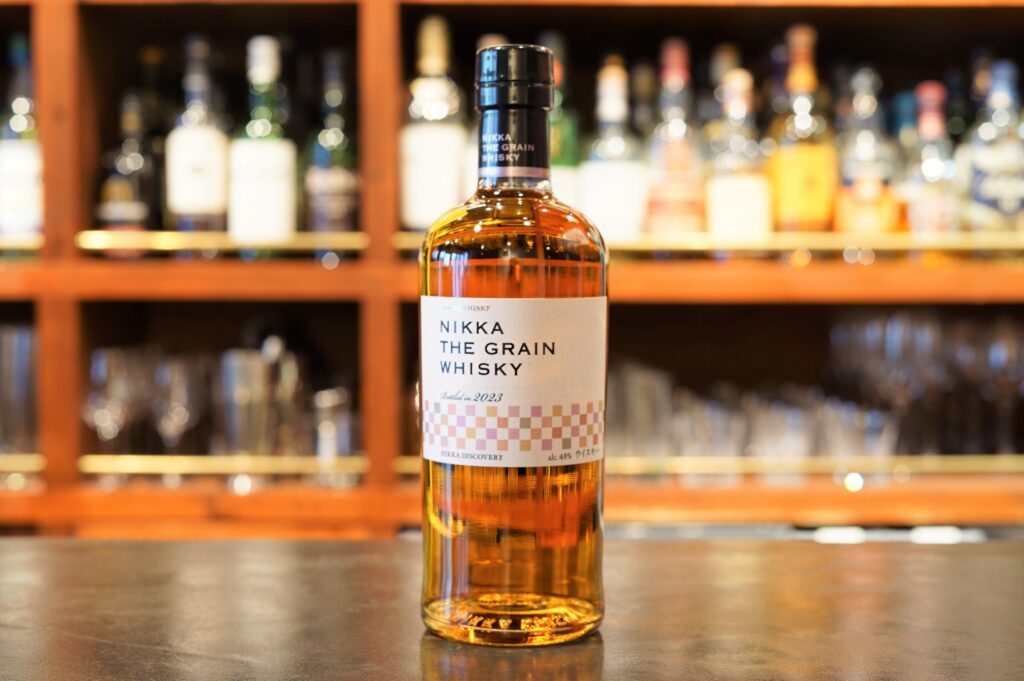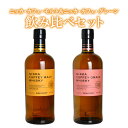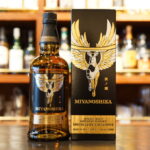“NIKKA THE GRAIN” will be released as the third product in the “NIKKA DISCOVERY Series” to be launched in 2021. The “NIKKA DISCOVERY Series” is a series that focuses on the depth created by Nikka Whisky, which will celebrate its 90th anniversary in 2024, and its history of creating different types of whisky through its various original whiskies and manufacturing processes such as raw materials and fermentation. This series focuses on the depth of Nikka Whisky’s history of whisky production.
In 1963, Nikka Whisky introduced a “café-type continuous distiller” to its Nishinomiya factory for the purpose of producing grain whisky (later moved to the Miyagikyo distillery in 1999), and as 2023 marks the 60th anniversary, this whisky was developed with a focus on the “diversity of grain whisky” that Nikka Whisky has.
1. Manufacturer
Nikka Whisky Company, Limited
| Establishment | 1934 (Showa 9) |
| Head office | 4-31, Minami-Aoyama 5-chome, Minato-ku, Tokyo 107-8616, Japan |
| Distilleries owned | Yoichi Distillery, Miyagikyo Distillery, Ben Nevis Distillery |
2. Distilleries
Miyagikyo Distillery
| Address | 1 Nikka, Aoba-ku, Sendai-shi, Miyagi 989-3433 |
| Start of operation | 1969 |
It has been almost 30 years since the first distillery was started in Yoichi, Hokkaido. Masataka Taketsuru, who believed that “whisky becomes richer and richer by blending multiple whiskies from different distilleries,” desperately needed a second distillery.
Taketsuru chose Miyagikyo in Sendai. Miyagikyo Gorge in Sendai, a lush green gorge blessed with two clear streams, the Hirose River and the Shinkawa River. When Taketsuru first visited this place, he drank a bottle of Black Nikka he had in the clear water of the Shinkawa River and confirmed the taste. It is said that he decided to build the distillery on the spot. The Miyagikyo Distillery is proud of its “café-type continuous distillation machine”.
At the time of its introduction, this distillation machine was already considered old-fashioned. Because it is an old type, it tends to leave a lingering taste, but Taketsuru chose this old type distillation machine because it is possible to transform it into the original aroma and sweetness of the raw materials through technology. At Miyagikyo Distillery, the people who inherited Taketsuru’s passion for whisky continue to make various attempts in pursuit of the best whisky possible.
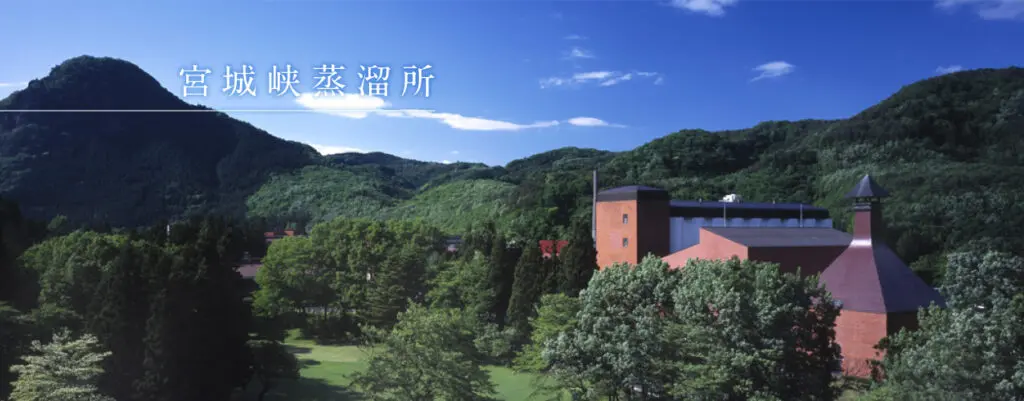 |
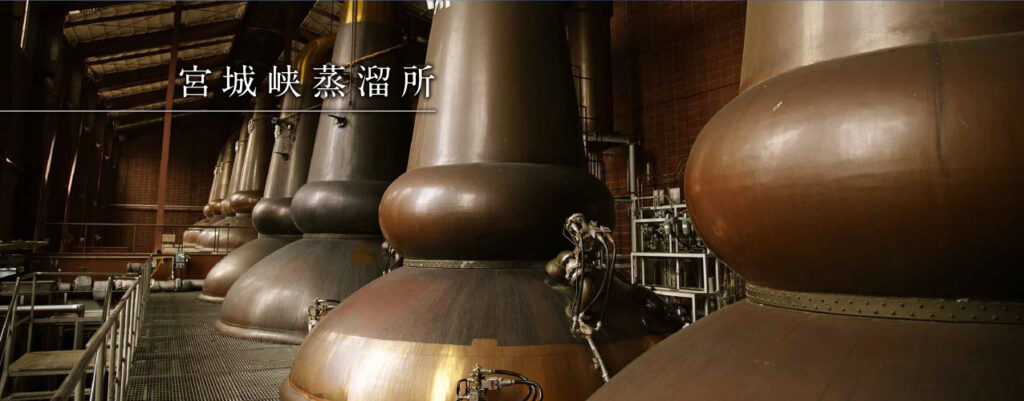 |
Image source: Miyagikyo Distillery
For more information about Miyagikyo Distillery, please see this article.
https://en.jpwhisky.net/japanesedistillery-2-3542/#2-1_Nikka_Whisky_Miyagikyo_Distillery”]
Nikka’s blended features consist of the original sake produced by three distillers (machines).
One is the straight pot still at the Yoichi Distillery. The first is the straight pot still at the Yoichi Distillery, which is currently the only distillery in the world that performs direct coal-fired distillation, producing heavy and powerful malt. It is a full-bodied malt with plenty of peat and smoke. The other is the bulge pot still at the Miyagikyo Distillery. The gorgeous and aromatic malt produced by the indirect steam distillation is a completely different type of original sake from Yoichi. Yoichi is compared to Highland and Miyagikyo is compared to Lowland, and both distilleries produce whiskies with their own unique characteristics.
The grain whisky is made from Miyagikyo’s café-type continuous distillation machine, which was introduced in 1963, based on founder Masataka Taketsuru’s earnest wish that “Japanese whisky cannot be called a full-fledged whisky unless it is made from grain whisky.” It is essential to balance the unique malts of Yoichi and Miyagikyo. It is brought together by blending techniques that have been handed down from Mr. Taketsuru.
Nikka Whisky “Miyagikyo Distillery” owns a traditional “café-style continuous distillation machine”. The continuous distillation process, which is currently the mainstream, can increase the degree of alcohol purification, but it also removes flavor components. On the other hand, Nikka’s “café-type continuous distillation machine” is older and less efficient, but it is characterized by the fact that the distillate retains the aroma and ingredients derived from the raw materials. This still was invented around 1830 and is called a “café still” after its developer, Eneas Caffé. Masataka Taketsuru, the founder of Nikka Whisky, had a dream to install a continuous distillation machine at his factory and produce authentic blended whiskey. His wish came true in 1963, and the café still, which was installed in 1963 and started full-scale operation the following year, was an “extremely old-fashioned” type even at that time. It was Masataka’s persistence in pursuit of “authentic taste.
3. Product name and photo
Nikka The Grain
Nikka The Grain
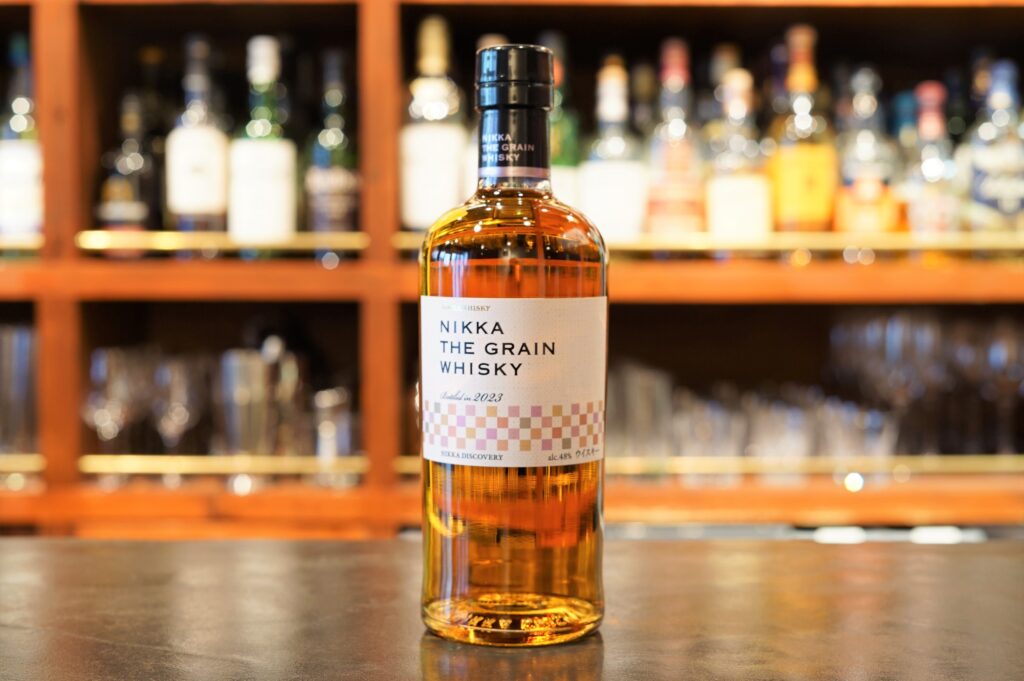
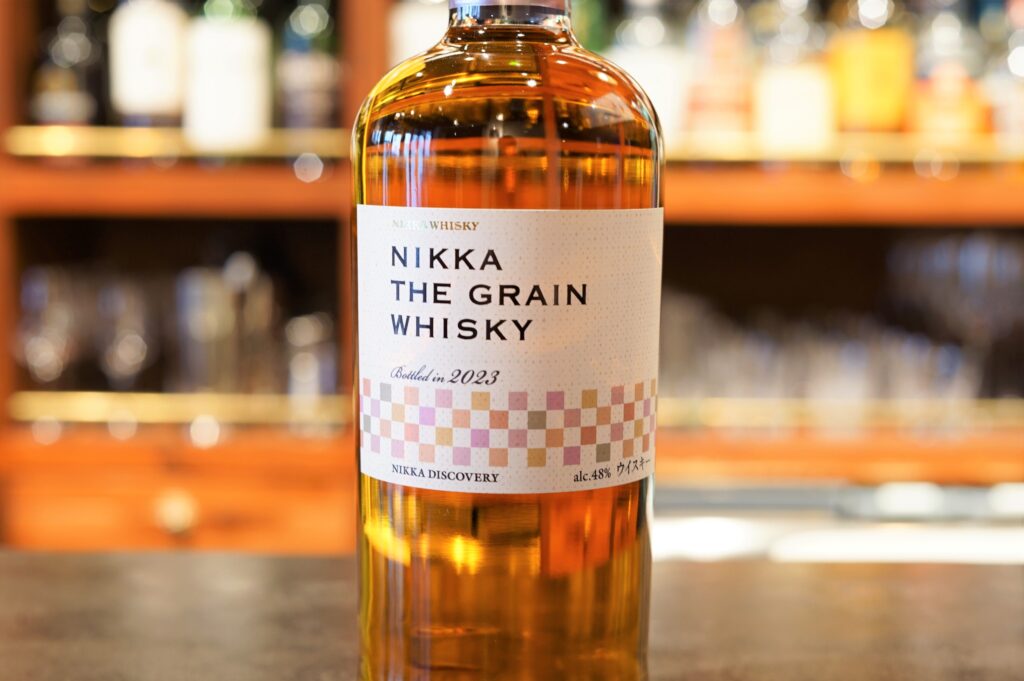 |
 |
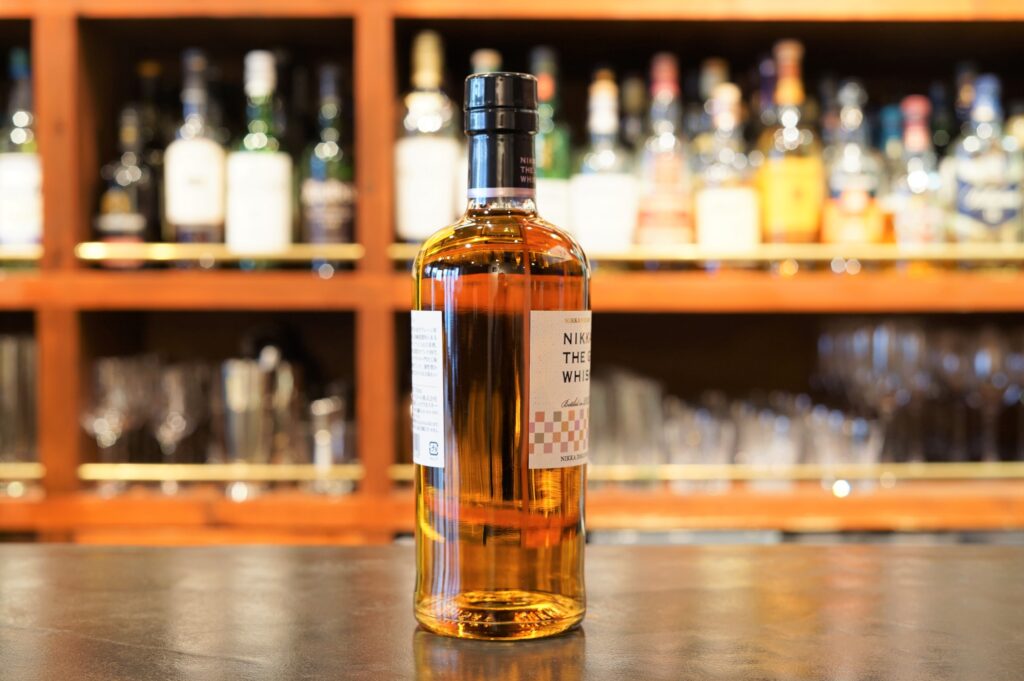 |
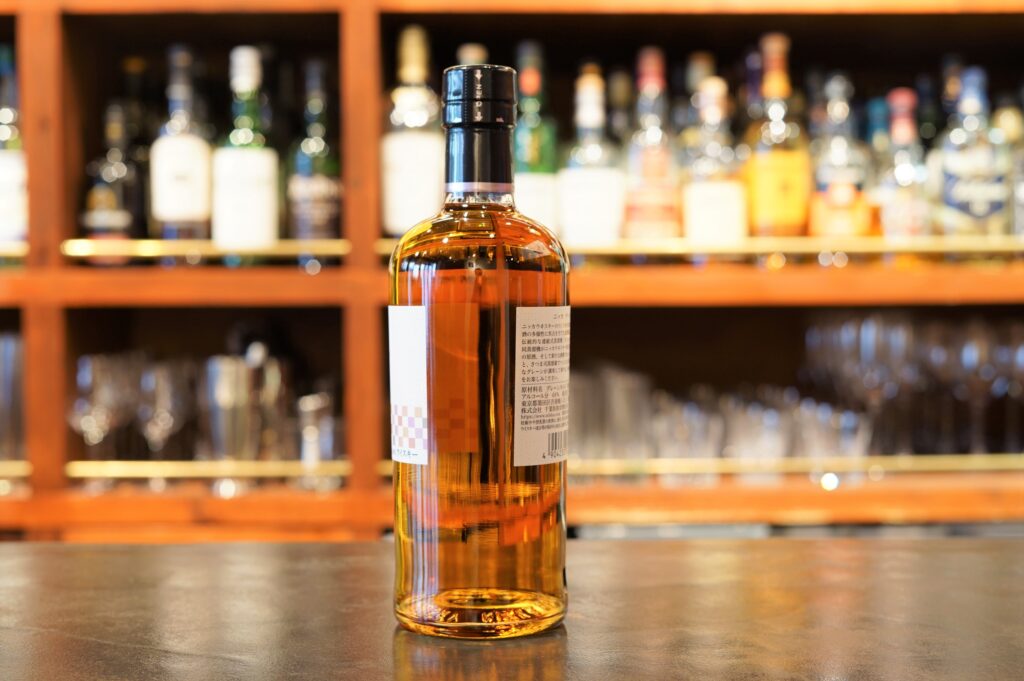 |
4. Characteristics
Nikka The Grain is composed of 7 individualities (original sake)The base of the distillate is a café grain produced in the café-type continuous distillation machine at the Miyagikyo Distillery in Sendai. Two barley grains and a corn rye distillate that have been secretly produced and nurtured at Nikka Whisky’s Moji Distillery in Kyushu and Satsumatsukasa Distillery have been added as new characteristics to the distillate.
In addition, we blended the cafe malt from the Miyagikyo Distillery and two rare, long-matured original malts from the Nishinomiya factory, where Masataka Taketsuru himself was involved in the introduction of the cafe-style continuous distillation machine.
The result is a grain whisky with a mellow, deep sweetness and a refreshing spiciness.
The result is an innovation with a variety of aromas and flavors that Nikka Whisky has never been able to achieve before.[Official Tasting Notes]
Aroma: Refreshing, reminiscent of marmalade and cider. Woody and vanillic. Aromas of sweet, savory grains, like toast and cookies.
Taste: mildly spicy like cinnamon and corn sweetness. Refreshing, full and puffy flavor derived from rye.
Aftertaste: Slightly bitter-sweet aftertaste. Clean finish.Reference: NIKKA THE GRAIN|Products|NIKKA WHISKY
This product is made with cafe malt, cafe grain from the Miyagikyo Distillery, and original sake from the Nishinomiya, Moji, and Satsumatsukasa Distilleries.
The Nishinomiya factory’s café malt and café grain are made from long-aged grain distilled in the “café-type continuous distillation machine” that was installed at the Nishinomiya factory from 1963 to 1999 (now moved to the Miyagikyo Distillery). In addition, the Satsumatsukasa Distillery’s corn rye base sake is a unique base sake with a flavor similar to bourbon, and its sweetness and freshness give it a good accent with an unprecedented impression.
| Distillery | Distilleries used |
| Miyagikyo Distillery | Cafe Grain, Cafe Malt |
| Nishinomiya Distillery | Long-aged Cafe Grain, Long-aged Cafe Malt |
| Moji Distillery | Barley grain |
| Satsumasa Distillery |
Barley grain, Corn and Rye |
4-1. Tasting notes
| Aroma | Sweet barley, with a hint of vanilla flavor. |
| Taste | Almond, bittersweet, slightly spicy and dry |
| Aftertaste | Bitter chocolate, crisp and refreshing aftertaste |
4-2. Product Specifications
| Alcohol content | 48% |
| By Sake | Grain Whisky |
| Cask type | ー |
| Volume | 700ml |
| Number of bottles sold | 10,000 bottles in Japan, 10,000 bottles overseas |
| Suggested retail price | 13,200 yen (including tax) |
| Release date | March 28, 2023 |
5. Awards
No awards have been received at this time.
6. Price
6-1. Manufacturer’s Suggested Retail Price
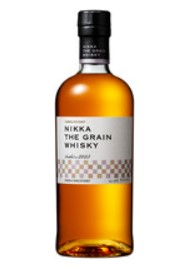
| Product name | Nikka The Grain |
| Capacity | 700ml |
| Suggested Retail Price | 13,200 yen (including tax) |
6-2. Resale price on Mercari
Resale prices on Mercari range from around 17,000 yen to 25,000 yen. (*As of 4/18/2023)
6-3. Sold price on Yahoo! Auctions
Sold price on Yahoo! Auctions: Lowest 14,000 yen Highest 28,000 yen Average 19,112 yen (*As of 4/18/2023)
6-4. Rakuten, Yahoo Shopping, Amazon
They are also available on mail order websites for around 20,000 yen to 30,000 yen. (*As of 4/17/2023)
6-5. Prices offered at BAR Shinkai
At “BAR Shinkai” operated by this site, we offer it in small quantities such as 1 glass, 45ml: 3,960 yen 30ml: 2,640 yen, 15ml: 1,320 yen.

7. Summary
This new grain whisky is made from a total of seven unique types of grain whisky from four different distilleries, with the Miyagikyo Distillery’s Cafe Grain as the core, Cafe Malt, and grain whisky from the Nishinomiya, Moji, and Satsumatsukasa Distilleries.
This is the first time that the Moji factory and three types of grain whisky from the Satsumatsukasa Distillery have been used. It can be said that this is the first time that the Moji factory and the Satsumatsukasa Distillery have used three different types of grain whisky. It is a well-balanced whisky with “sweetness reminiscent of café malt,” “barley aroma,” and “dry and spicy rye-derived flavor”.
■Please check out other articles about Nikka Whisky.
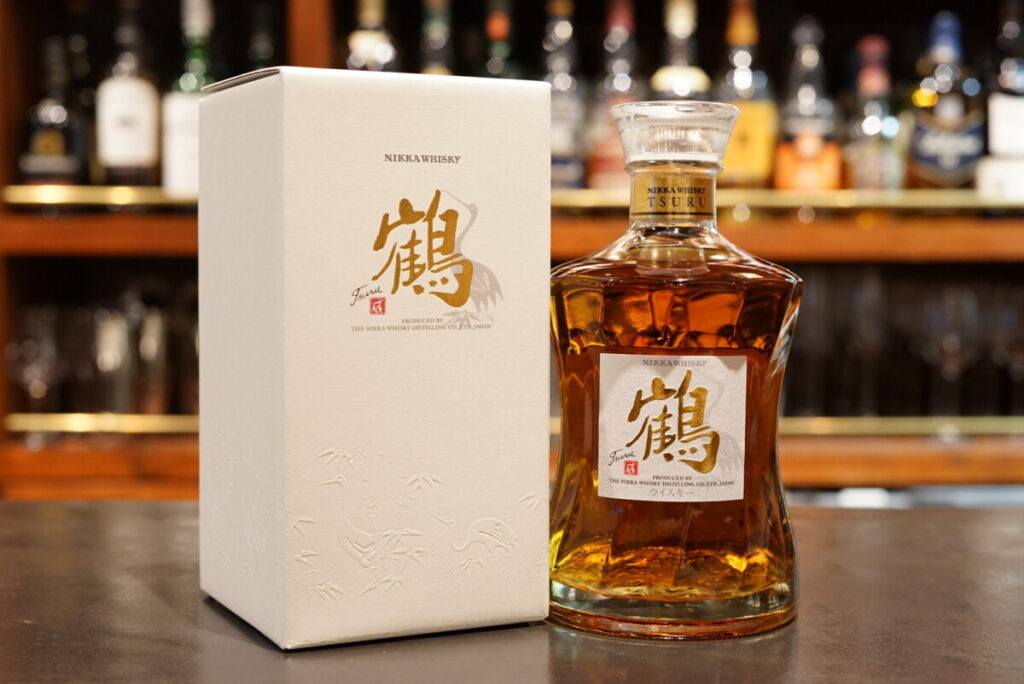
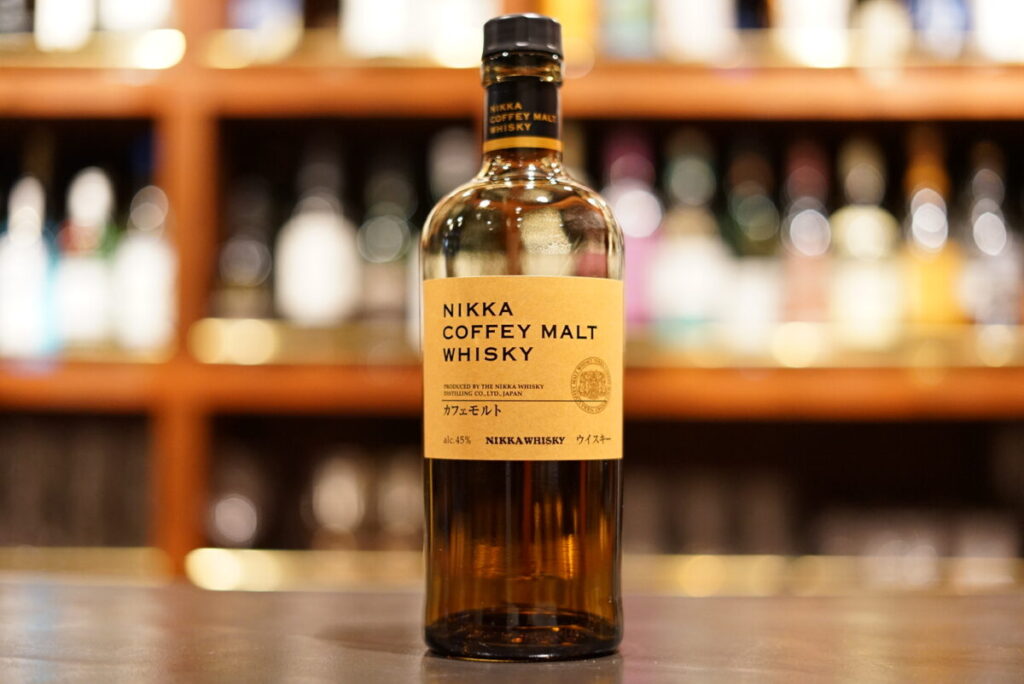
Lastly: Recommended Books on Japanese Whisky
If you want to learn more about Japanese whisky, which is a global trend, we highly recommend these books.
(1).Whisky Galore Vol.29 December 2021 issue
In the December 2021 issue of Whisky Galore, published by the Whisky Culture Research Institute, we report on 11 Japanese craft distilleries, including some that are open to the public for the first time, under the title of “Japanese Whisky Craft Frontline,” the first of three consecutive issues. Why did the popularity of Japanese whisky and the craft boom occur? We will examine with interviews. Chichibu Distillery / Chichibu No.2 Distillery / Mars Shinshu Distillery / Mars Tsunuki Distillery / Kanosuke Distillery / Hioki Distillery / Ontake Distillery / Osuzuyama Distillery / Kaikyo Distillery / Hanyu Distillery / Konosu Distillery
(2). Japanese Whisky as an Education for Business
This is a book written by Mamoru Tsuchiya, a world-famous whisky critic and representative of the Whisky Culture Research Institute, titled “Japanese Whisky as a Culture that Works for Business” .
The book covers the basics of whisky, the introduction of whisky to Japan, the birth of Japanese whisky, advertising strategies and the rise of Japanese whisky, and the current rise of craft distilleries. This is a book that summarizes Japanese whisky in a very easy to understand way.
(3). Whisky and I (Masataka Taketsuru)
Masataka Taketsuru, the founder of Nikka Whisky, devoted his life to brewing whisky in Japan. This is a revised and reprinted version of the autobiography of a man who simply loved whisky and talked about himself. The book vividly depicts the days when he went to Scotland alone to study as a young man and overcame many hardships to complete Japanese whisky, as well as his companion, Rita.
(4). A Letter of Challenge from a New Generation Distillery
Launching in 2019. With the world experiencing an unprecedented whisky boom, what were the managers of craft distilleries thinking and what were their thoughts as they took on the challenge of making whisky? This book tells the stories of 13 craft distillery owners, including Ichiro Hido of Venture Whisky, famous for his Ichirose Malt, who inspired the birth of craft distilleries in Japan.
(5). Whiskey Rising
This is the Japanese version of Whisky Risng, published in the US in 2016, with much updated content. Not only does it describe the history of Japanese whisky in detail, but it also includes data on all the distilleries in Japan, including the craft distilleries that have been founded in recent years. The book also includes descriptions of the legendary bottles that have been released, as well as information on bars where Japanese whisky can be found.

